1lumen selects and reviews products personally. We may earn affiliate commissions through our links, which help support our testing.
Sofirn SP10V3 review
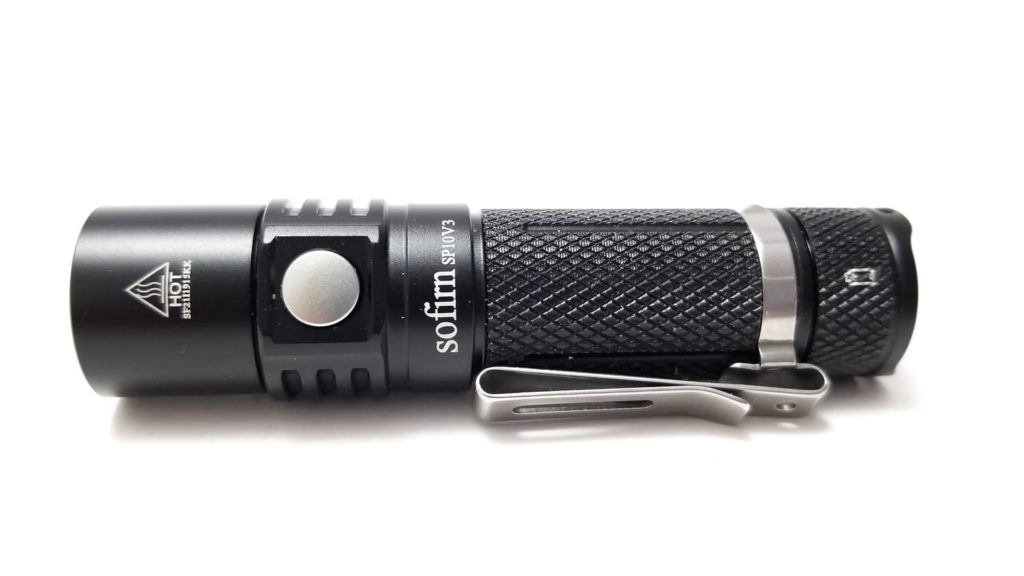
Sofirn SP10V3 specifications
| Brand/model | Sofirn SP10V3 |
|---|---|
| LED | Samsung LH351D |
| Lumens | 1,000 lm |
| Beam intensity | 3675 cd |
| Battery config. | 1*14500 or AA Nimh, Nicad, or Alkaline |
| Material | Aluminum |
| Modes | 5 |
| Blinkies | Strobe, Beacon, SOS |
| Reflector | LOP |
| Waterproof | IPX8 |
| Review date | November 2021 |
Introduction:
Sofirn introduced the SP10 series way back in 2016 as an affordable, simple AA-size dual-chemistry subcompact pocket light. The light was an addition to Sofirn’s SF10 and SF12 (now discontinued) AA-powered (alkaline or Nicad/Nimh only) series. The new SP10 was dual-chemistry capable and came with an e-switch switch. The LED was a Cree XP-G2 good for about 550 Lumens on a 14500 lithium cell and 270 with a good Nimh. Sofirn released a few variants with minor improvements over the next few years, culminating in the SP10S model in 2020.
This light ditched the XP-G2 in favor of Samsung’s excellent LH351D LED in the ‘dog fart’ variant featuring 5000K CCT with 90 CRI. It brought a nice boost in output along with a nicer beam and breathed some new life into an aging design. However, the UI implementation could have benefitted from some refinement. The great thing about Sofirn is they are active listeners, and implement suggestions for design improvements or adjustments to their products, so sure enough, after a brief hiatus, we have a new SP10V3. Sofirn sent one out for testing, and this new version promises some design updates, UI changes, as well as a boost in output.
Package quality.
Sofirn has never invested in packaging, and the trend continues. The box is utilitarian, with the logo across the top and “LED Flashlight” in the middle with a graphic. It’s the exact same as the outgoing SP10S package, and maintains the keep it simple matra. Inside, the light was riding in a molded plastic tray with the accessories underneath:
- Sofirn SP10 v3 flashlight
- Sofirn-branded 900 mAh 14500 battery (loaded in the light)
- Pocket clip (attached)
- Micro USB charging cable (for the charger)
- Single slot charger
- User manual
- 2 spare o-rings
- Quick release keychain link
- Lanyard
This is a very comprehensive kit, and with the optional add-ons (battery, charger) comes with everything you need to get going. This would make a great first flashlight! The battery was preinstalled with a plastic isolator to keep it from dumping during storage, and when I pulled it, the battery read 3.7 volts, a good storage voltage. The included charger is a very simple micro USB-powered unit and seems a bit wonky, but hey, essentially free is a good price, right? No complaints with the accessories.

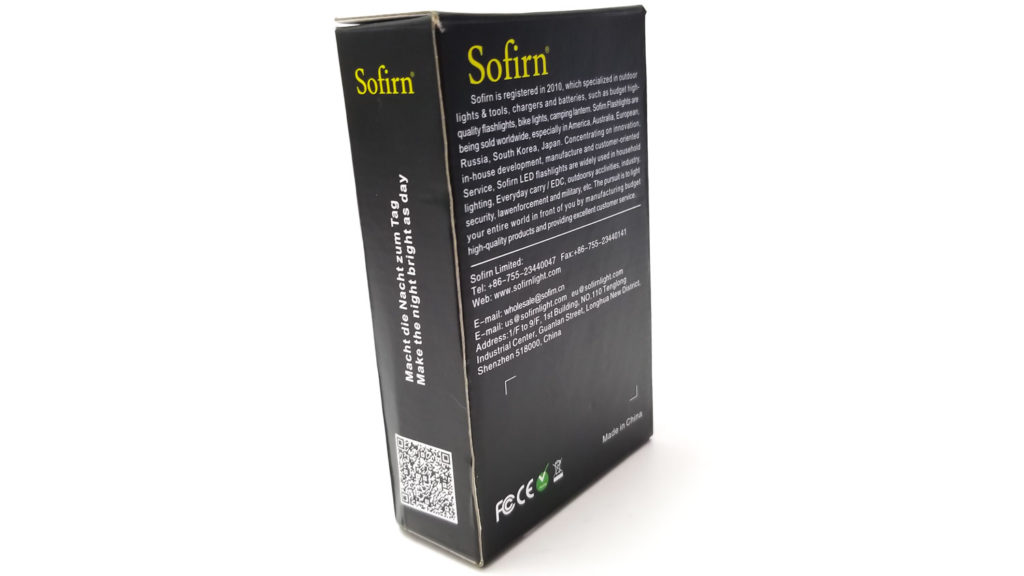

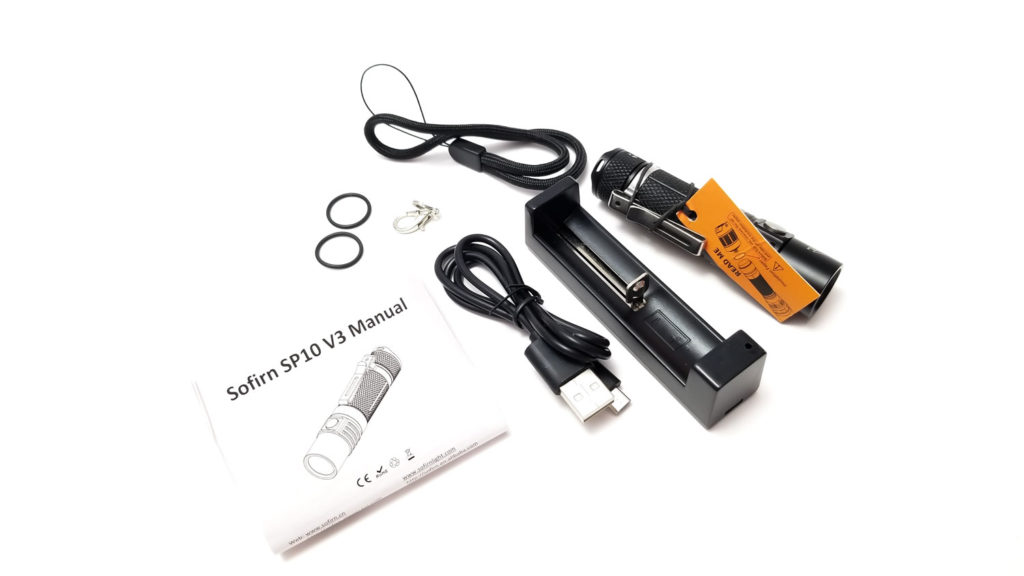
Flashlight in use
The Sofirn SP10S shares a nearly identical exterior to the SP10V3, so it was deja-vu when handling the V3. It’s covered in nice knurling on the body and tailcap for a super-secure grip. It’s nicely balanced as well. The SP10S’s knurling is grippier than the V3’s, but I actually enjoyed the V3’s knurling better, and I don’t think it gives up any grip vs. its predecessor. Despite the AA form factor, it’s a bit chunky compared to my current favorite AA-size EDC Lumintop FWAA and Skilhunt E2A.
The front mounted electronic switch is carried over from the previous model, but it’s been redesigned for the V3. It’s still metal, and sticks out about the same, but the new switch adds some texture, and is slightly larger and dome-shaped instead of flat-topped. I can’t say I like one better than the other, and they feel similar with about the same amount of ‘clickiness’ and feedback. That said, I think the V3 switch feels slightly better, only because the clicks are more positive and the larger size is better for my fat fingers. The switch is also slightly protected as it’s set in a flat spot in the head with opposing ridges. Even though it wasn’t as easy to accidentally activate, it still came on in my pocket without the electronic lockout set.
For retention, the tailcap has been completely redesigned. Sofirn again listened to us since that was a pain point on the SP10S with it’s teeny-tiny (and sharp!) lanyard hole. The V3 model has much larger holes (two on opposing sides of the taicap, no less) and threading the lanyard was easy-peasy this time. Thanks Sofirn! The V3 also has a new pocket clip. It’s still made from stainless steel, and still a clip-on, but the new clip is a dual position design for bezel up or down carry. You could also clip it to a baseball cap bill, sleeve, collar, etc. for headlamp use.
Tail standing is still possible, although the tailcap redesign has compromised stability somewhat and it’s not as stable when tail standing as the SP10S.
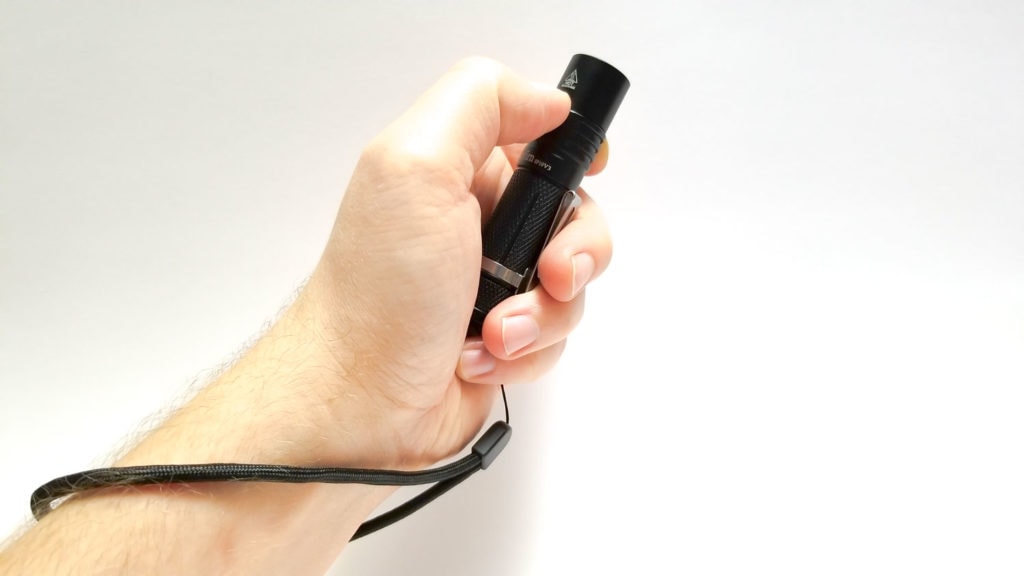
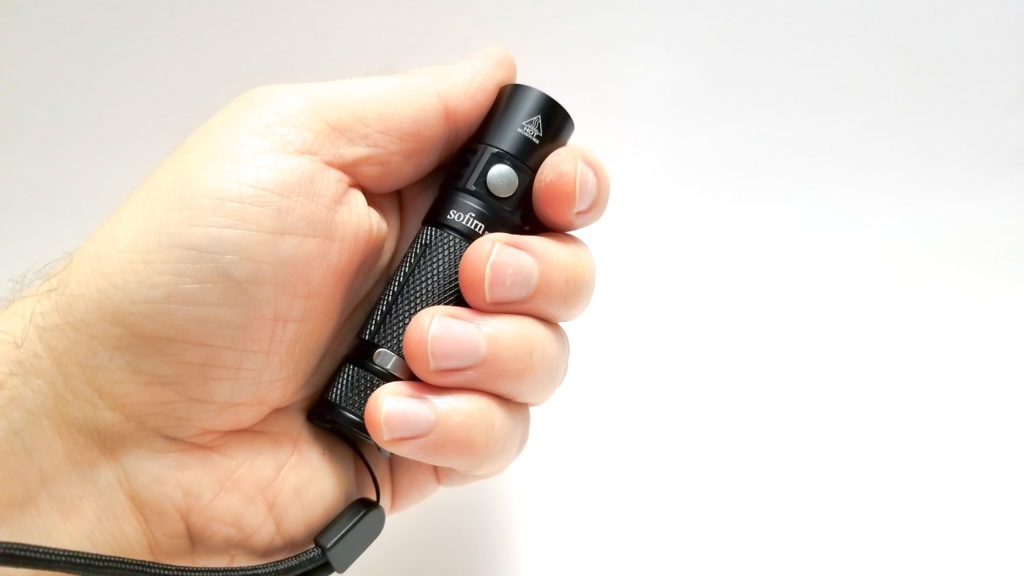
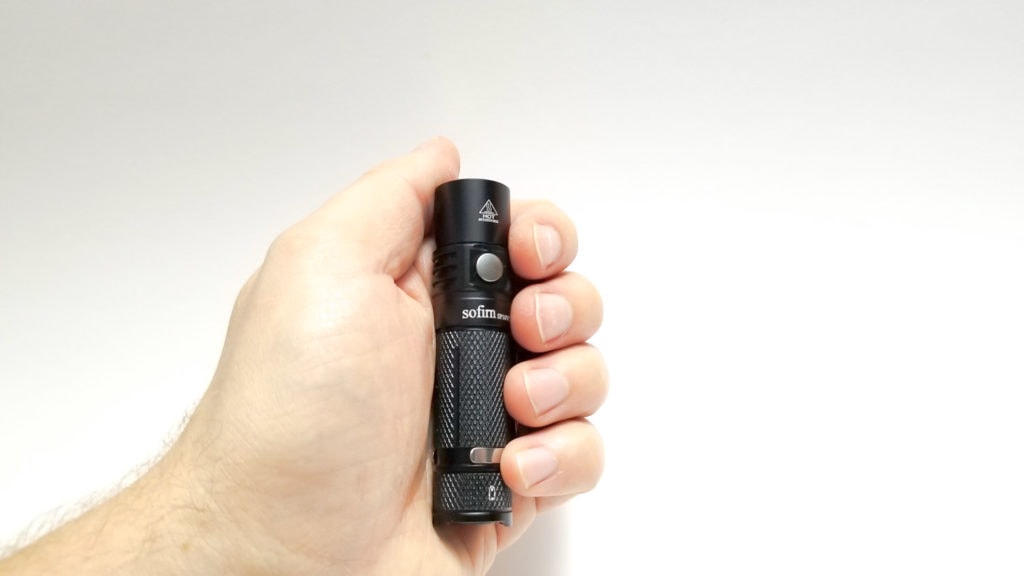
Build Quality, and Warranty
Anyone who’s ever owned a Sofirn can attest to the fairly high dollar-to-quality ratio, and you really get a lot for your dollar with these lights. At one point, the SP10S was available for as little as $12.00 (albeit direct from China), which was incredible value The new V3 comes in around $20 US (from Sofirn) for the light, and around $30 if you go for the kit with charger and battery. That’s a little spendy, but still a good value.
The SP10V3 is well-made, and doesn’t have the abrupt edges like my SP10S does around the head and tailcap since every edge on the V3 is knocked down and chamfered. The light is made from 6061 aluminum, coated in the obligatory black HAIII anodizing. It’s a nice finish, semi-gloss, and seems durable. I didn’t notice any excessive wear after removing and replacing the pocket clip several times. I tried taking the bezel off, but it’s glued. You can remove the head though, exposing fully anodized (good for mechanical lockout), but dainty, rectangular cut threads (same as the tailcap end).The threads were nicely lubed and very smooth though, and didn’t feel like they would cross-thread. There’s thick o-rings on both ends for waterproofing and Sofirn gives the V3 the same IPX8 rating for temporary immersion. With no external charging port, I think the SP10V3 is going to be very water resistant. There’s a pretty stout gold-plated spring pressed into the tailcap, and the driver end has a solid positive contact with interference bars on either side for mechanical reverse polarity protection (and no flat top cells).
For the record, the threads are the same as the SP10S, so you can swap the SP10S head to the SP10V3 tube and vice versa if you wanted to. The tail caps are also interchangeable if you don’t like the V3’s tailcap (or vice versa).
The warranty is pretty decent, and Sofirn has a lot to say about this, so I’ll let them break it down: If your Sofirn product has any defect as the result of the materials or workmanship we want to make it right! Within 30 days of purchase: Contact the original seller for repair or replacement. Within 2 years of purchase: Contact Sofirn for repair or replacement. This warranty does not cover normal wear and tear, modifications, misuse, disintegrations, negligence, accidents, improper maintenance, or repair by anyone other than an Authorized retailer or Sofirn itself. Of course, this warranty does not cover normal wear and tear. IF YOUR LIGHT HAS SIGNIFICANT DAMAGE AND IT IS SENT TO US, WE WILL SEND IT BACK TO YOU. This warranty also does NOT cover modifications, misuse, disintegrations, negligence, accidents, improper maintenance, or repair by anyone others. BUYER IS RESPONSIBLE FOR RETURN SHIPPING COSTS. Please note that the warranty process may take 3-4 weeks to get it back to you. *Accessories such as pocket clips, holsters, and charging cables are not under the 5 years warranty. These are accessories given for free with our products. Batteries are currently under a 1 year warranty. To fulfill the warranty, we usually send parts for repairing because shipping back to us costs too much according to the flashlight values. If customers agree, we would love to offer a huge discounted price for a new one as replacement.
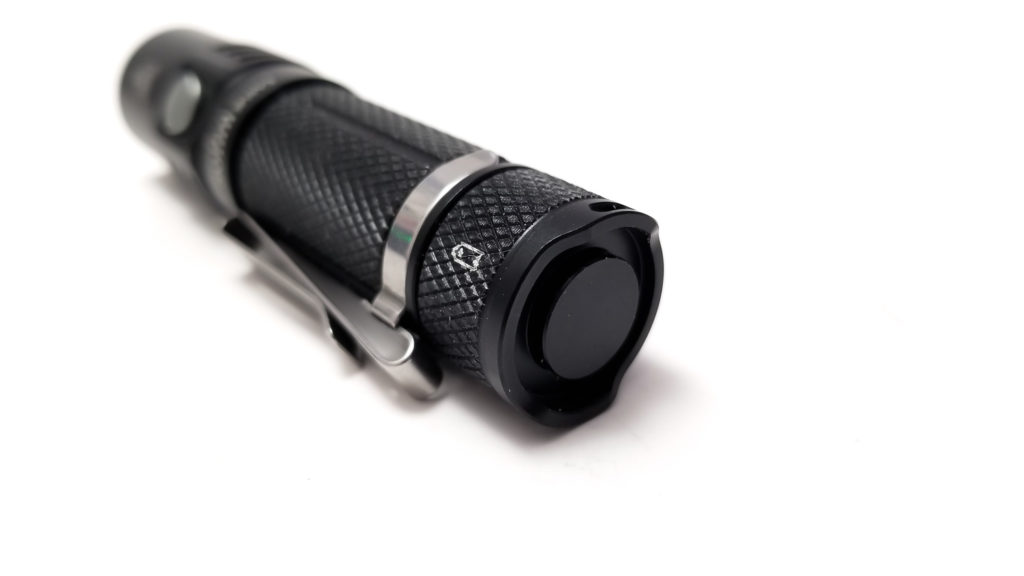
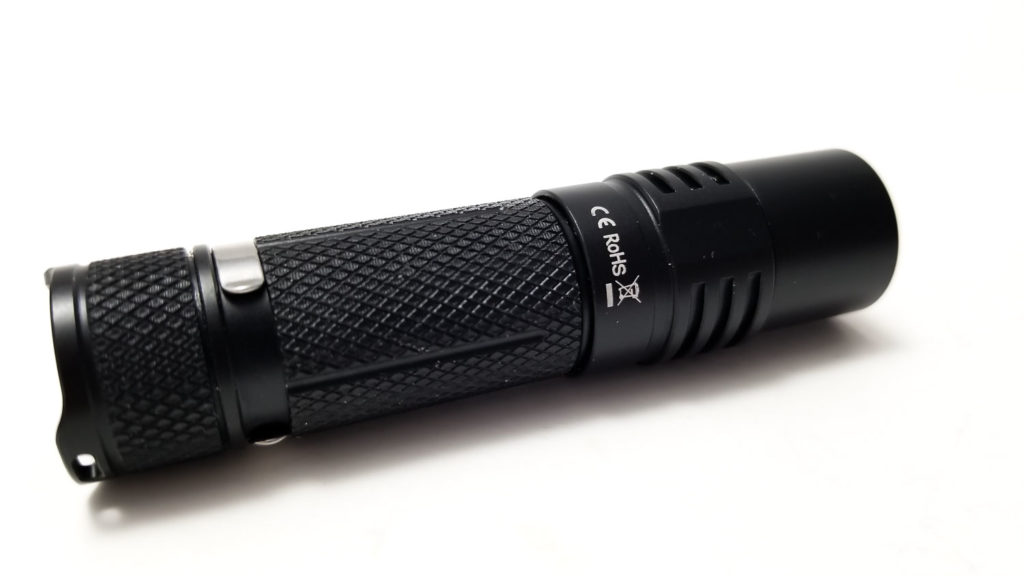
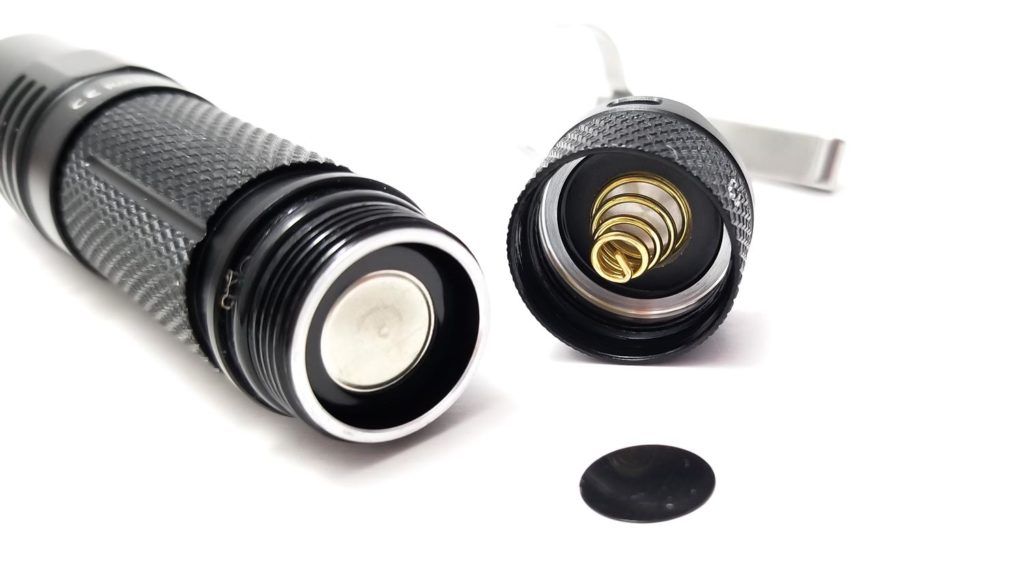
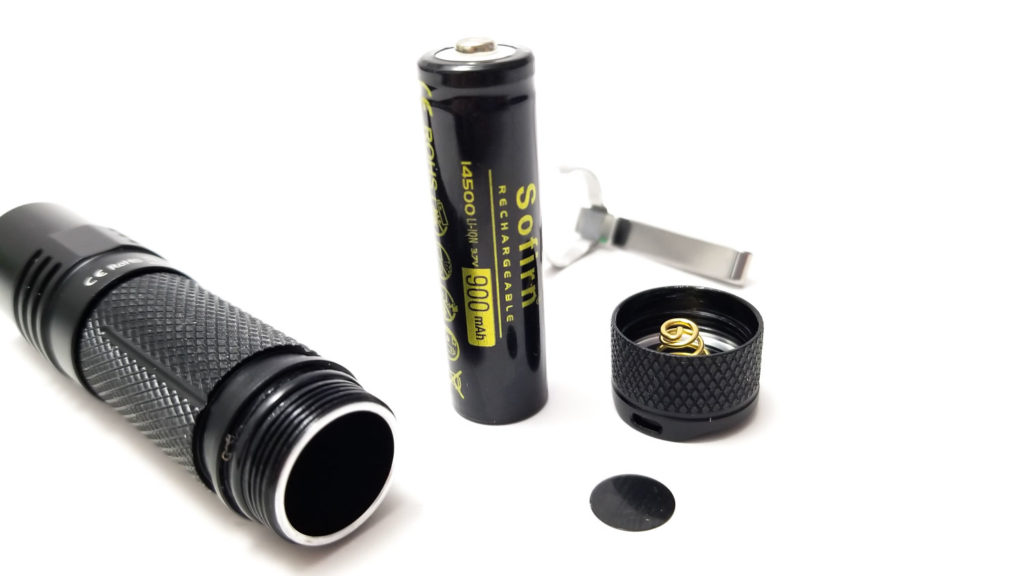
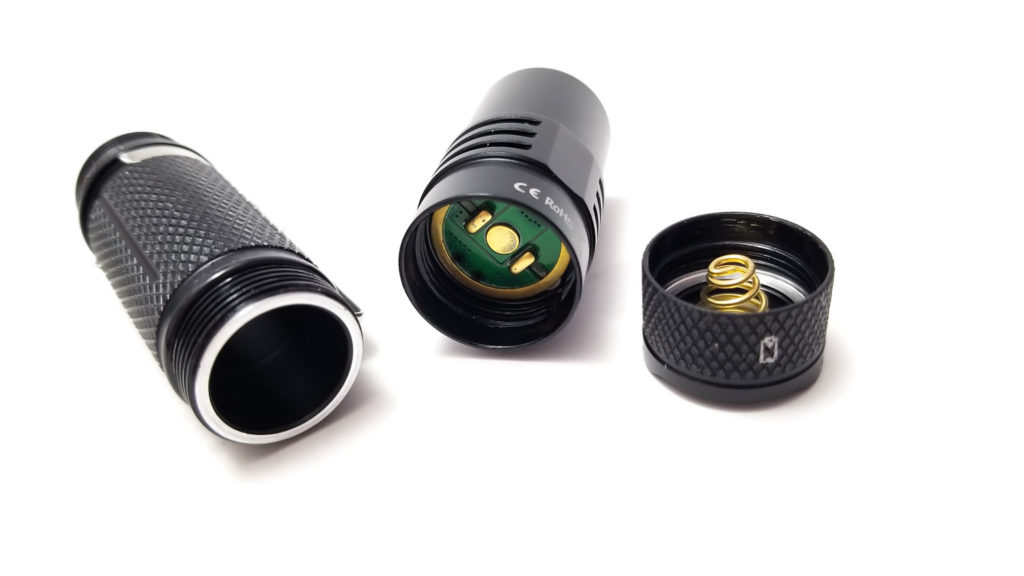

LED, Lens, Bezel, and Reflector
The SP10V3 carries over the Samsung LH351D emitter from the original ‘S’ model. It’s the same ‘dog fart’ part number as well (look it up). This particular LH351D sports 5000K and 90 CRI, which is a great combination of neutral tint and very high CRI. This is a 3535-size emitter (same as Cree’s XP-L), running on 3 volts nominal and is capable of high output as well. A floody emitter, it’s still paired with an orange peel reflector, but the V3 has a new reflector design, with a larger emitter hole featuring a centering ring. In addition, unlike the SP10S, the V3’s mineral glass lens is not (that I could tell) AR coated. Everything else is the same, no crenulations on the bezel, and the lens is recessed about 2.2 mm for protection from drops.
Thanks to the new reflector, the beam is a bit different compared to the SP10S. It’s still pretty floody, but the hotspot is more diffused and less defined than the S model. You still get abundant spill with some useful throw. I actually prefer the beam of the SP10S over the V3, simply because of the tighter hotspot. Of course, the tint is wonderful (of course it’s still a bit green at low current), and the high CRI brings definition to brown and red objects. The Opple Lightmaster Pro confirms this. Overall, it’s a very effective beam for EDC. Well done Sofirn!
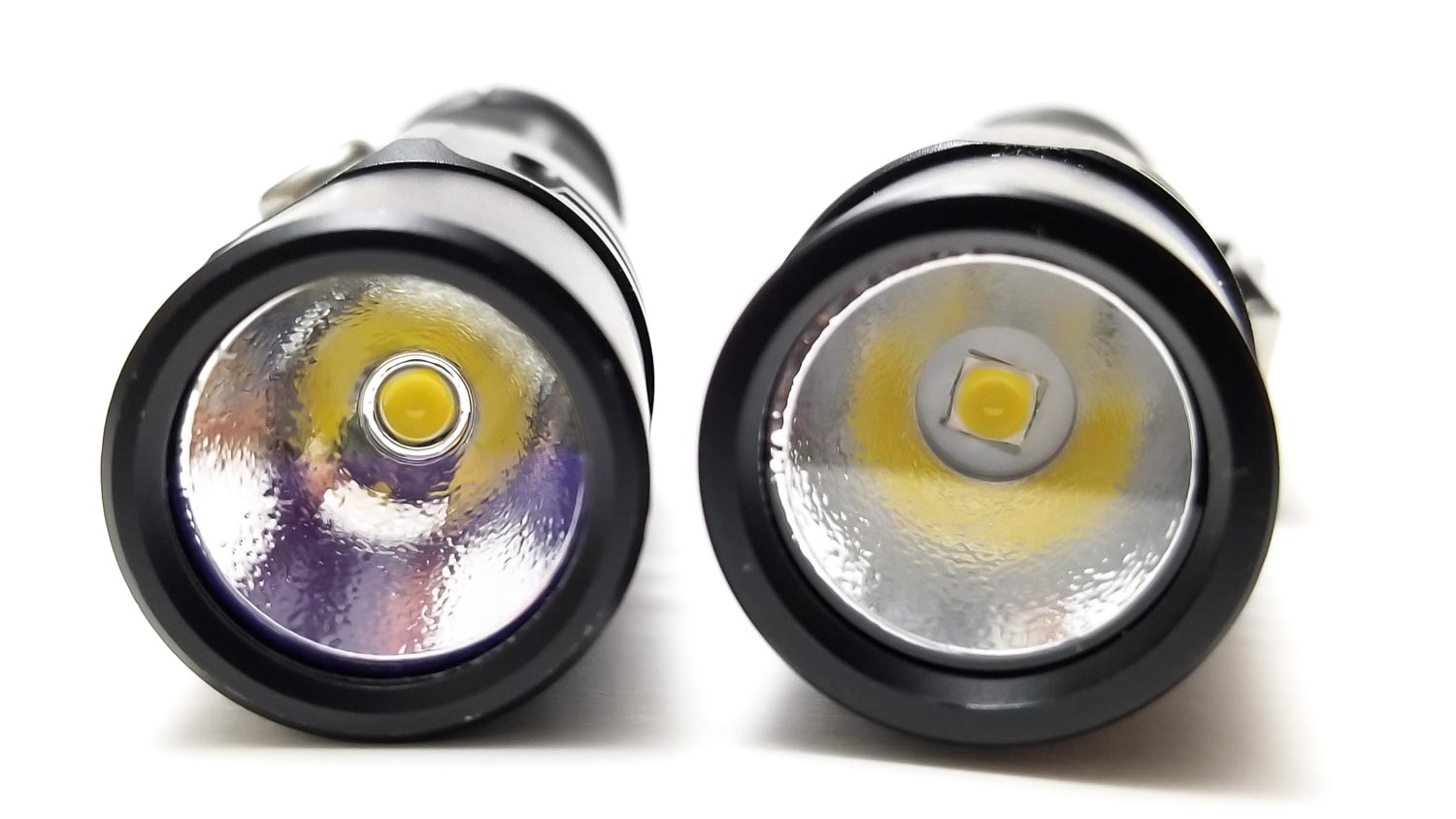
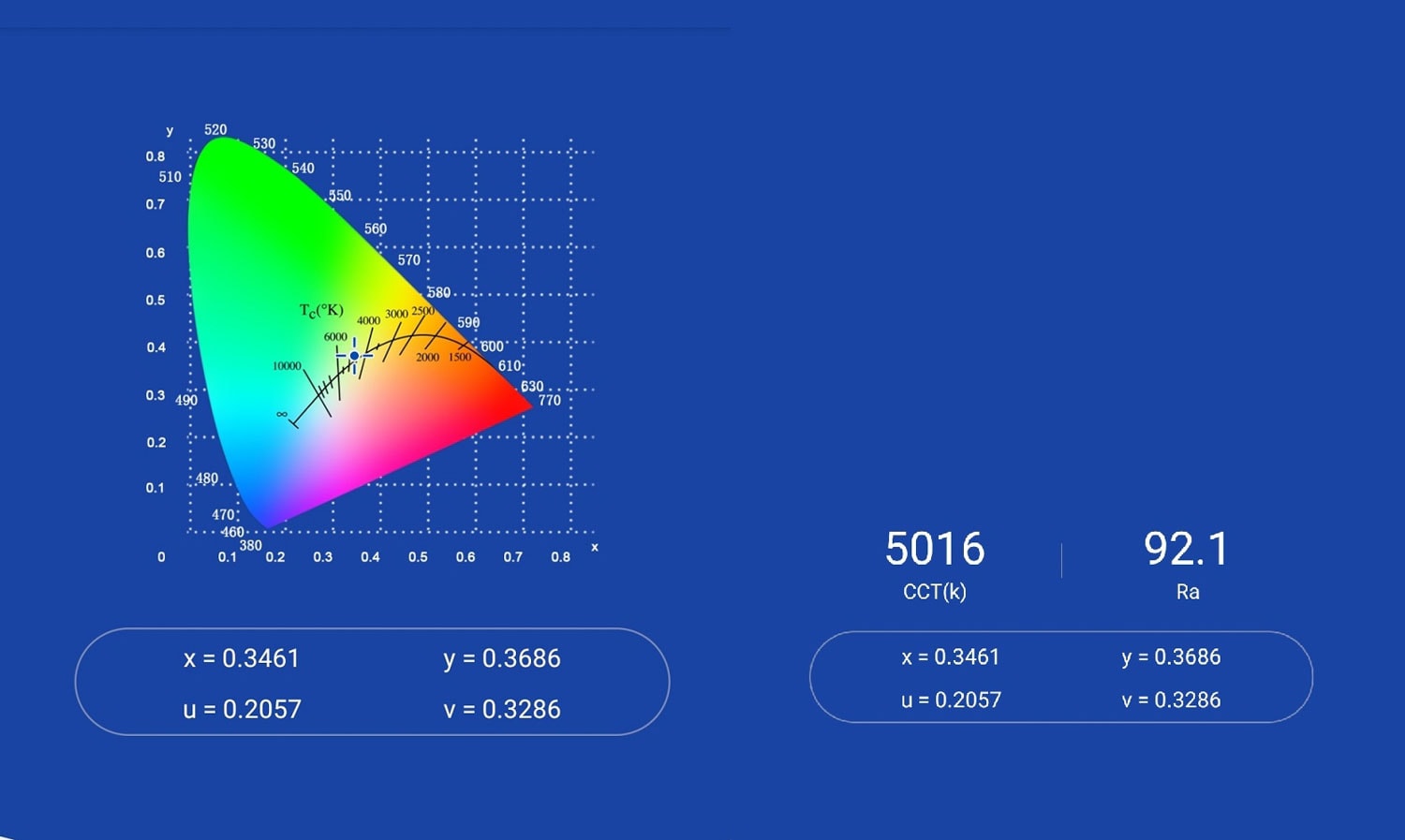
Dimensions and size comparison
- Length: 8.8 cm / 3.46 inches
- Head diameter: 2.05 cm / 0.80 inches
- Body diameter: 2.05 cm / 0.80 inches
Weight:
- Without battery: 41.4 grams / 1.46 oz. (SP10S: 37.8 grams, 1.33 oz)
- With included 14500 battery: 60.8 grams / 2.14 oz. (SP10S with same cell: 56.7 grams / 2 oz)
I suspected the added weight was due to the new pocket clip, and that’s true, but the V3 is slightly heavier without the clip (not by much though).
Flashlight comparison Sofirn SP10 v3 vs Sofirn SP10s etc.
I compared the SP10V3 to (what else) the SP10S, and some other AA-size EDC lights (and some larger ones).
Group 1 top to bottom: Sofirn SP10V3, Sofirn SP10S
Group 2 left to right: Thorfire TG06, Sofirn SP10S, Sofirn SP10V3, Brinyte HL16, Skilhunt E2A, Fenix E09R, Lumintop FWAA
Group 3 top to bottom: Sofirn SC31T, Sofirn SP10V3

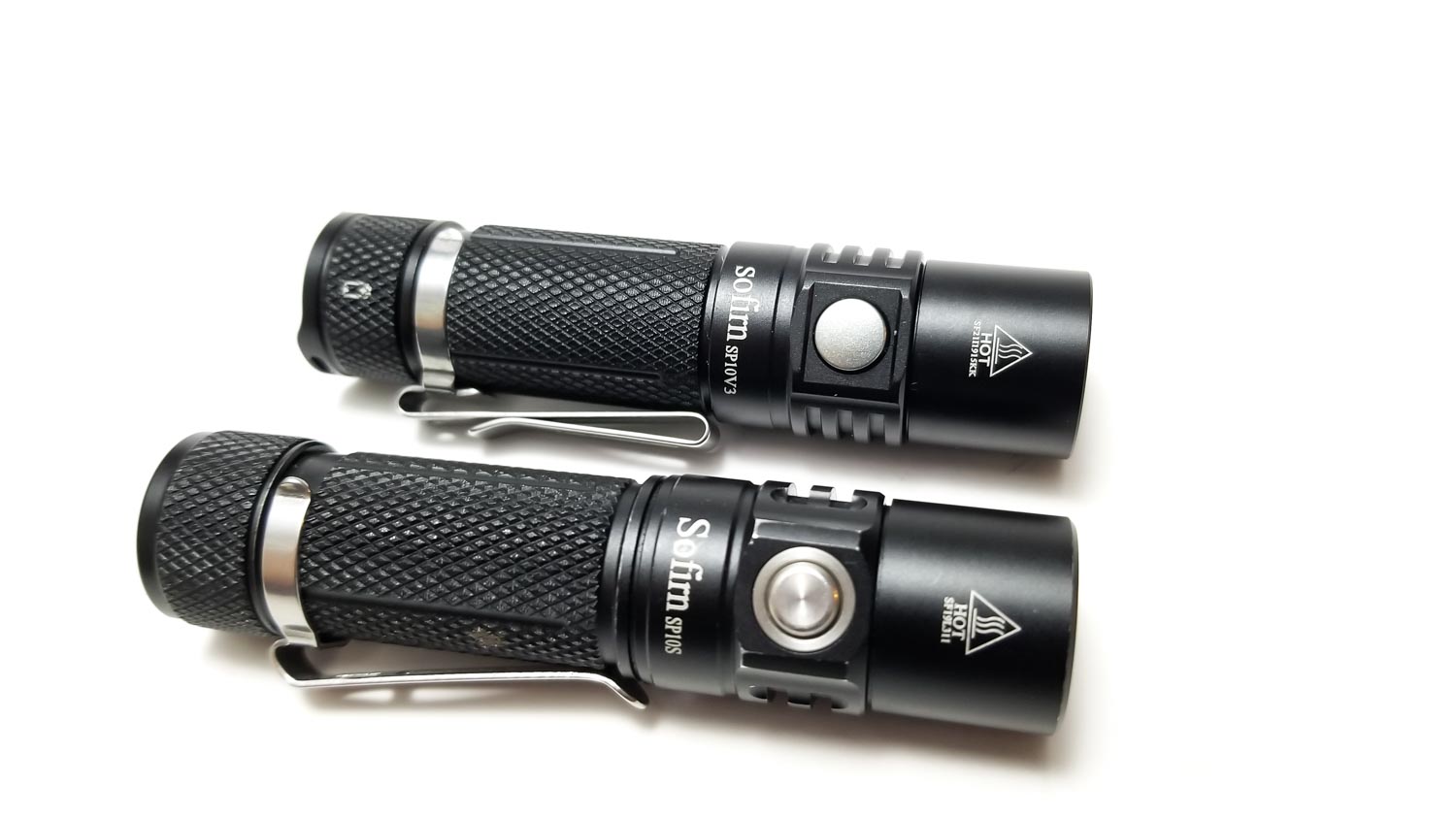
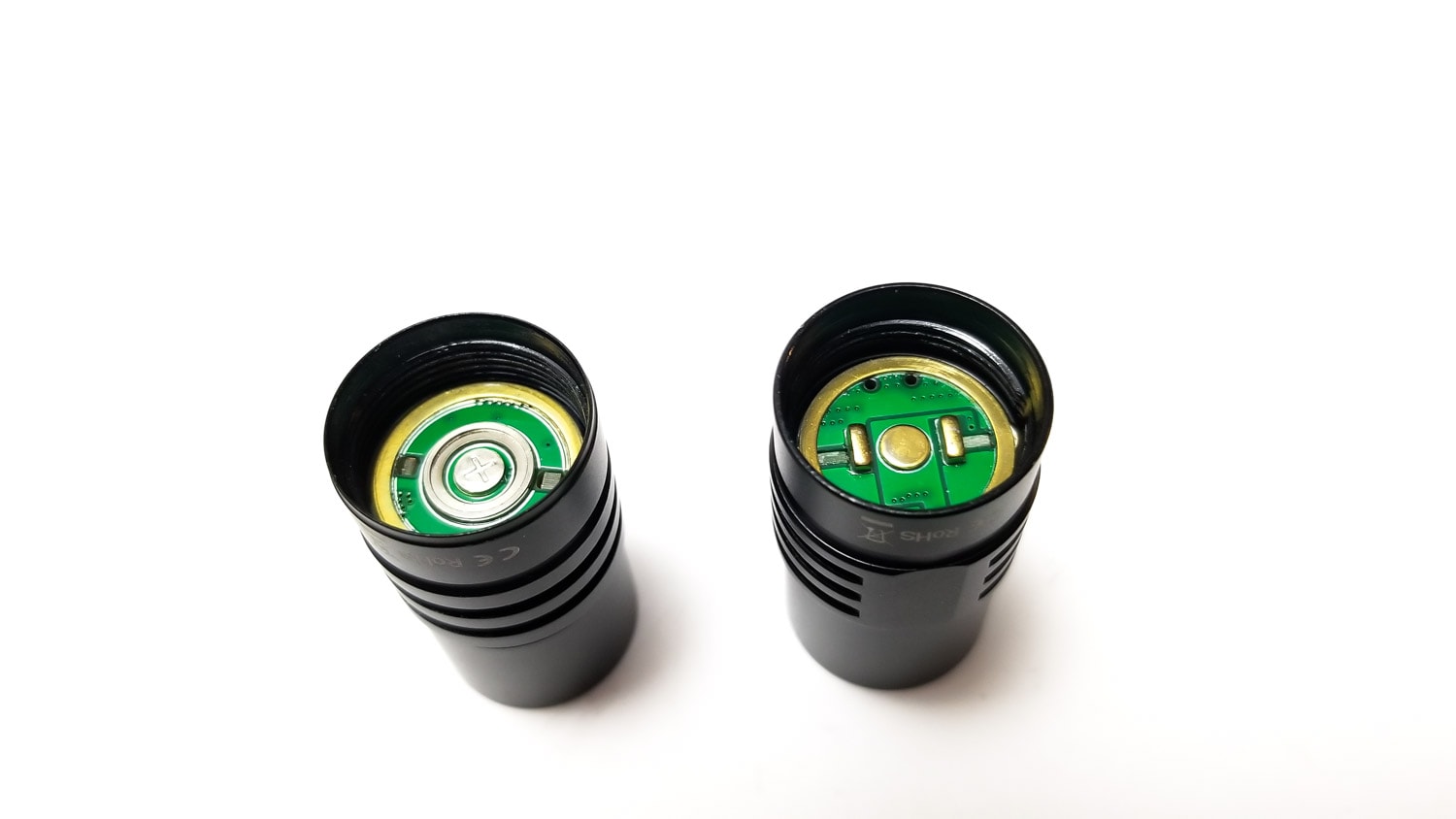
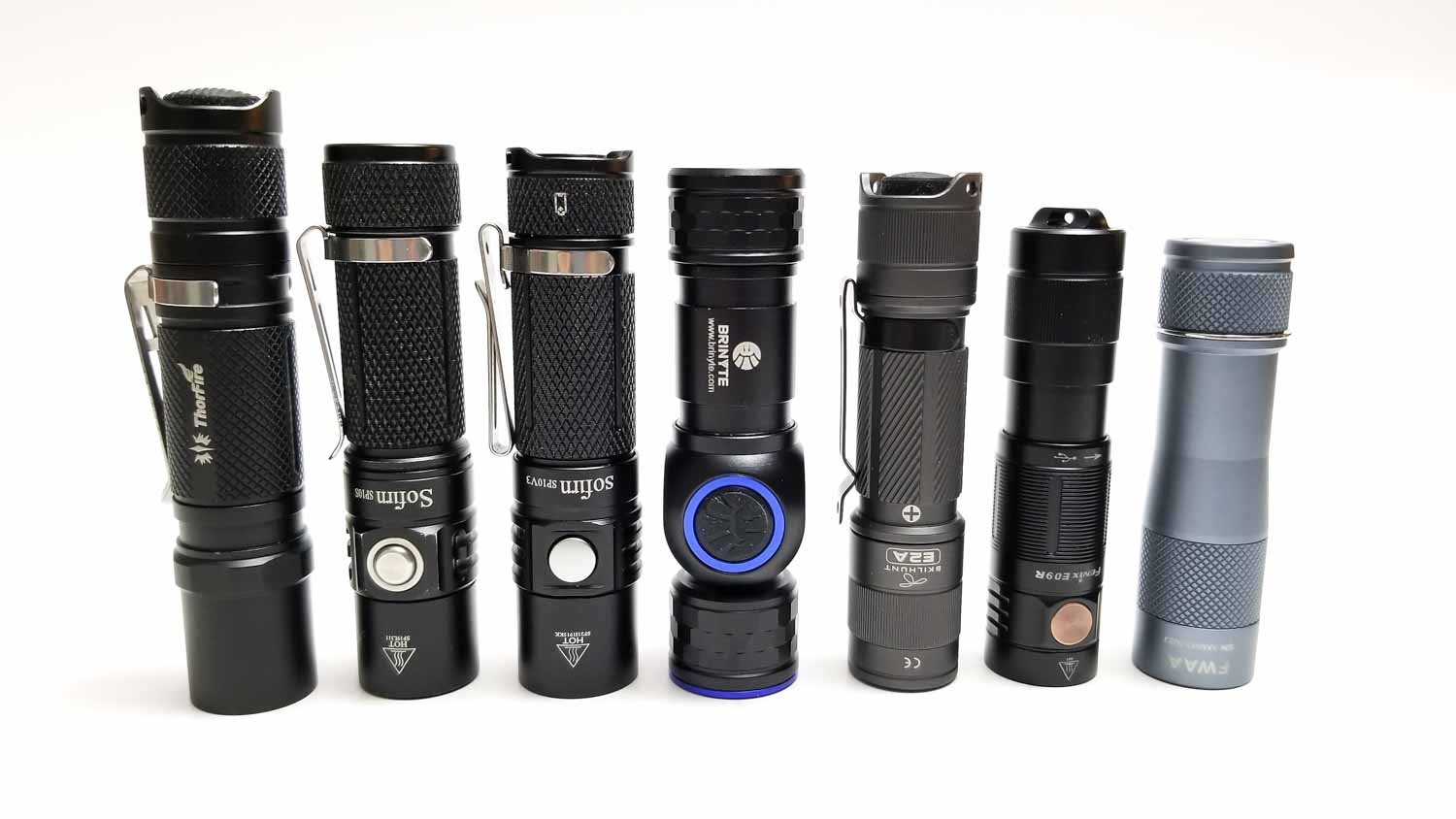
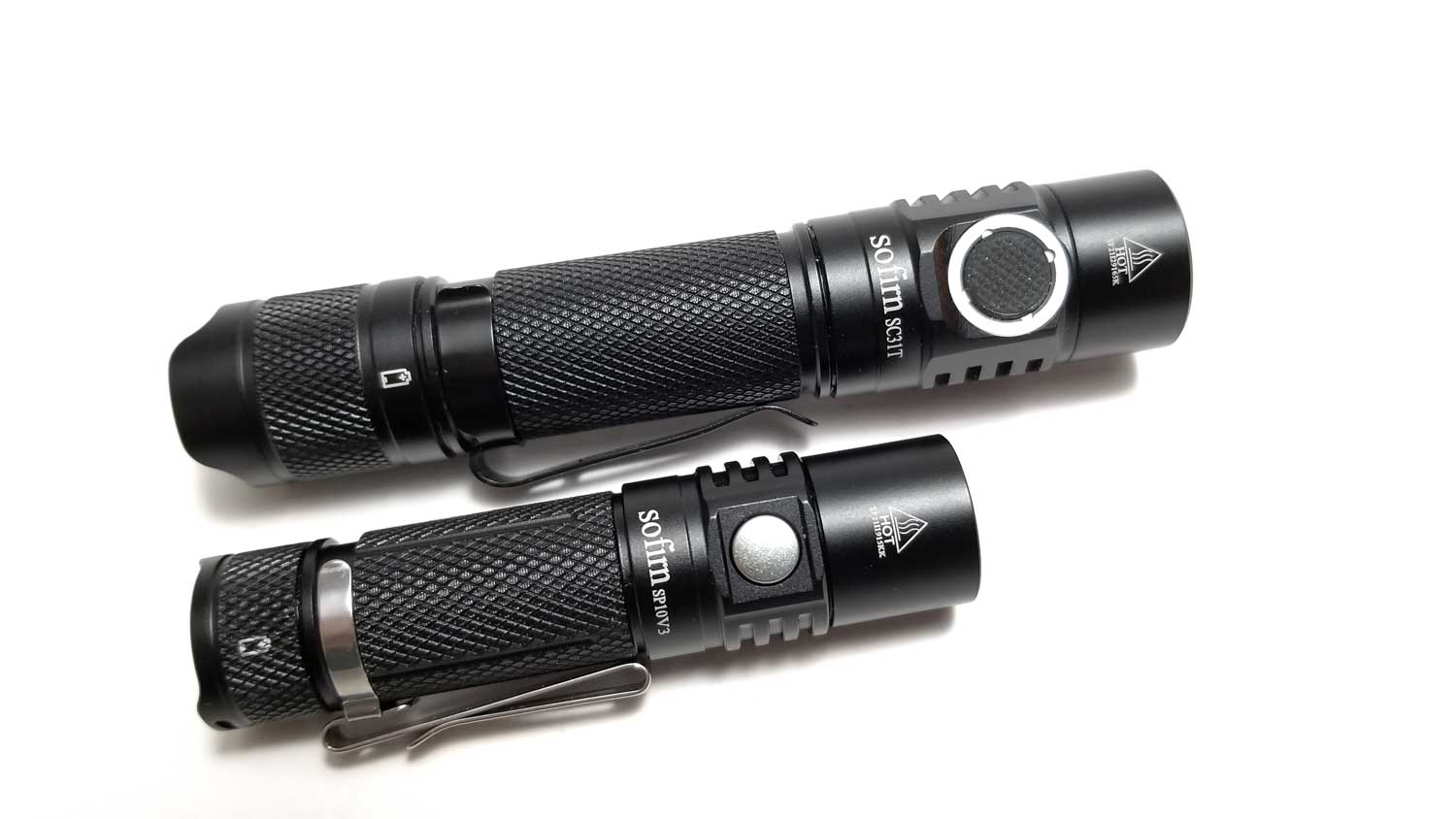
Driver & User Interface:
The driver is the same from before with some tweaks to (supposedly) boost the output. Since the SP10V3 is multi-chemistry compatible, it needs a boost driver to increase the voltage to the LEDs forward voltage (1.5 volts to roughly 3.1 volts). Boost drivers are great for linear output (unlike an FET driver) and consistent brightness, but this one also includes a direct drive circuit when using 14500 cells controlled by PWM (I don’t think it’s a buck/boost driver).
The UI has also been tweaked from the original, and I’m glad because I wasn’t too fond of the SP10S UI. It worked, but was wonky and quirky. The V3’s UI is similar to the SP10S I tested last year, but is now one click on, one click off (no more press and hold), and has 2 extra blinky modes (SOS and Beacon). Sofirn has also tweaked the thermal management and supposedly added ATR to the other modes (Turbo is still an auto step down to High), but of course, I’ll test that.
Available modes: Moon, Low, Mid, High, double-click for Turbo. Triple-click for strobe, with a press and hold for SOS and Beacon.
From OFF:
- Single click: Turns on in last mode
- Double-click: Turbo
- Triple click: Strobe (press and hold for SOS, repeat for Beacon)
- Press and hold: Moon
From ON:
- Single click: Turns off
- Press and hold: Cycles through modes: L-M-H-L
- Double click: Turbo
- Triple click: Strobe (press and hold for SOS, repeat for Beacon)
Mode memory:
- Yes (even available when using 1.2 volt cells!)
Shortcuts:
- Double-clicking the e-switch in any mode activates Turbo, triple-click activates Strobe. Press and hold from off activates Moon.
Low voltage warning:
- Yes. Light steps down to a very low level until it hits Ultra Low brightness. After a while, the light will shut down. I did notice some blinks during the runtime test for low voltage
Strobe/blinkies
- Variable strobe, SOS, Beacon flasher.
Lock-out mode:
- Yes, rapidly clicking 4 times activates the lockout. The light blinks twice to confirm the lockout, and will blink twice when the switch is pressed. Repeat to unlock. The light will turn on in Low mode after being unlocked.
PWM
- Yes. Very fast PWM for Moon-H, but none was visible on Turbo
Additional info on the UI:
I like the UI improvements Sofirn made here. I’m glad Moonlight isn’t part of the main UI (although you can argue that point), and I’m okay with press and hold to change modes as well like Thrunite’s UI. Mode memory works on lithium-ion and Nimh/Alkaline, and I really won’t miss press and hold for off, either.
I probably won’t use SOS or Beacon anytime soon, so those are kind of superfluous, but again, nice to have a not need than need and not have, right? Sofirn says they changed the temperature regulation as well. The S version relied on timed stepdowns, which is carried over to the V3’s Turbo mode only, but they supposedly added some kind of ATR for the regular modes (yep, I’m gonna test that).
Batteries & Charging
The V3 retains the multi-chemistry capabilities of the SP10S, so it can run on any AA-size battery, including 1.5 volt Alkaline and lithium primaries, 1.2 volt Nicad and Nimh, and 4.2 volt 14500 lithium ion rechargeables. This makes the light extremely flexible and versatile since you can swap out a depleted 14500 for a Nimh, or a depleted Nimh with an alkaline. You’ll get the highest output (up to 1000 Lumens per Sofirn) on a high-drain 14500, and the best runtimes on a high capacity Nimh. Alkalines and Nicads will work in a pinch, but I don’t recommend them for long-term use since they have a propensity to leak and if that happens it’s sayonara for the light’s internals. If you want to keep the V3 powered up and ready for a long time, go with 1.5 volt lithium primaries or if you keep the 14500 installed, give the tailcap a little counterclockwise twist to break the current path.
The kit came with a Sofirn-branded 900 mAh 14500 cell. It’s probably a rewrap and I don’t know who makes it. I threw it in my analyzing charger for an internal resistance test and got about 60 milliohms. Onboard charging? There’s no onboard charging for the V3, and that’s fine. The battery-equipped kit includes a single-slot micro USB powered charger that looks strikingly similar to the Xtar MC1. It can take 10440 up to 26650-size li-ion cells and honestly, it’s just okay. The slider is not the best, and made crunching and grinding noises when cycled, but it didn’t bind up. There’s a single LED indicator at the top that’s green for standby/fully charged and red when charging. The micro USB port was pretty sticky also, and took a bit of force the first few times to insert the connector. When connected to a 1 amp wall charger, it’s good for up to 750 milliamps output, and that’s plenty for the 900 mAh 14500 cell, but not for larger cells. My USB tester showed it consuming 850 mA, so accounting for losses in the boost/buck regulator, it’s close enough.
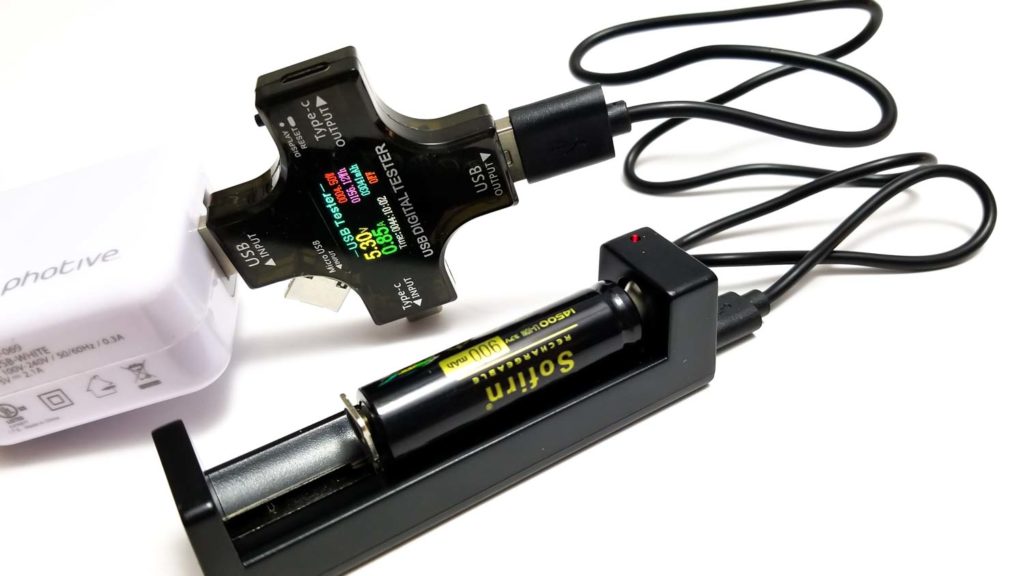

Performance
Lumen measurements (for each mode)
I measured Lumens using my 30 cm integrating sphere with a Digi-Sense 20250-00 data logging lux meter that’s been calibrated with several lights of known output. Tests were conducted using a fully charged 900 mAh 14500 cell. Amps and output were measured using my RadioShack T-RMS multimeter with 16 gauge wires inserted in the meter. I mostly used the included cell, but I also tested output with an IKEA LADDA 2450 mAh Nimh (in parentheses), but it was only different on Turbo. There was no appreciable difference on the lower modes.
| Mode | Amps at start | Specs | start | 30 sec | 10min |
|---|---|---|---|---|---|
| Moon | 33 mA | 1 | 4.15 lm | 4.15 lm | – |
| Low | 80 mA | 10 | 18 lm | 18 lm | – |
| Medium | 379 mA | 100 | 103 lm | 101 lm | 96 lm |
| High | 1.08 A | 350 | 332 lm | 324 lm | 324 lm |
| Turbo | 3.1 A | 1,000 lm | 996 lm (332) | 905 (224) | 213 lm |
Sofirn’s advertised figures must have been taken with a 14500 cell, since these are quite a bit higher than what I got with the Nihm battery. This is really good output for a compact light and even close to some 18650-powered lights out there.
Parasitic drain:
- 1.9 microamps
Runtime graph
Runtime tests were conducted using the 30 cm integrating sphere with the Digi-Sense 20250-00 data logging lux meter calibrated using several lights of known output. I used the included fully charged 900 mAh 14500 battery for each test and tested Turbo, High, and Medium modes.
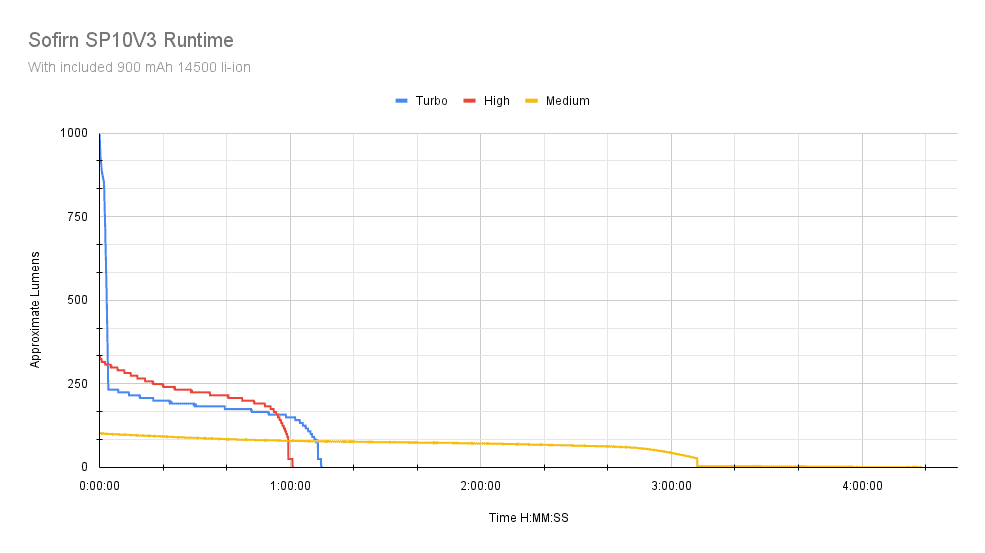
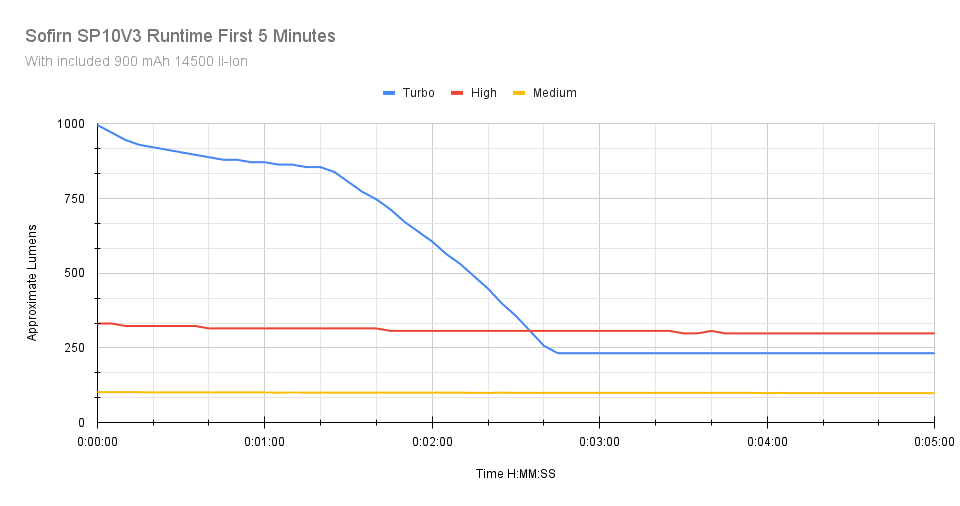
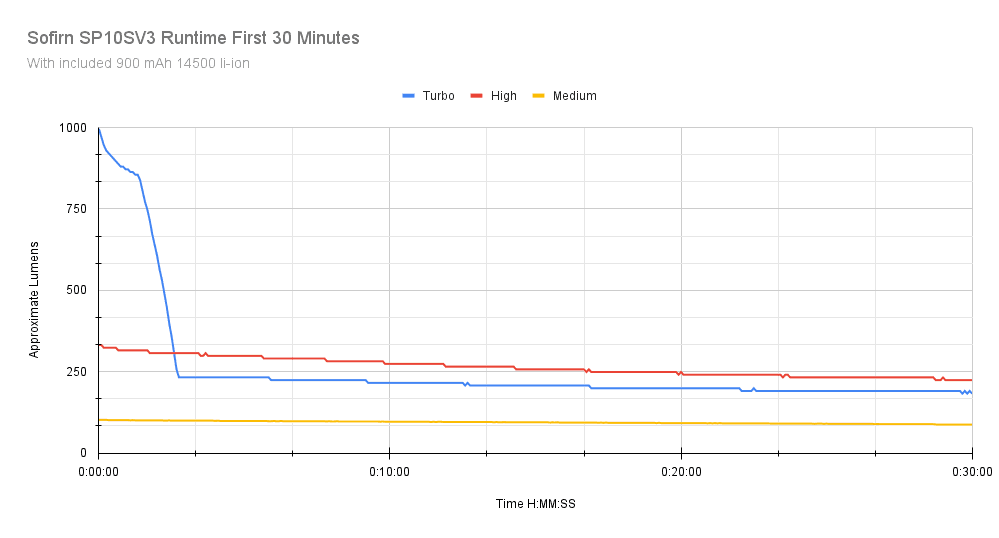
Turbo started close to 1000 Lumens at 996, but it was short-lived and started to throttle almost immediately, but the output stayed above 900 Lumens for 30 seconds. Impressive for a small host! It didn’t heat up as much as I expected it to. At 30 seconds the head was only 45 C, and by 60 seconds that was up to 48 C. There is definitely a timed step down at work here, and it happens at around 1 minute 25 seconds when the head hits 50 C. It takes the output from about 900 Lumens down to under 250 in about 60 seconds, so it’s a pretty noticeable decrease. The output stays very consistent at around 200 Lumens over the next 20 minutes, but steadily declines as the battery drains until 1 hour 8 minutes in, LVP abruptly intervenes and drops the output to 24 Lumens, then off the lux meter scale. I ended the test 1 minute 30 seconds later. There were some LVP notifications characterized by blink patterns starting about 5 minutes from the big LVP drop off. The total runtime was 1 hour 8 minutes. Sofirn’s runtime spec is 1 hour on the nose. The battery was sitting at 2.82 volts.
High started at 332 Lumens and actually did pretty good, holding 300 Lumens or better for almost 3 minutes. The output doesn’t drop below 200 Lumens until the 44 minute 55 second mark, and at this point is holding higher output for longer than Turbo. The light gets pretty hot on High: At 10 minutes in, the head is over 54 C, and too hot to handle, but it takes a while to get there since by 3 minutes it’s well under 50 C. The output decreases as the cell drains, and by the 59 minute mark the output is down to under 100 Lumens, and 25 seconds later it drops way down to 24 Lumens, then off the scale. I ended the test at 1 hour, 40 seconds. Sofirn says it should last about 1 hour 6 minutes, so again, not far off.
Medium was uneventful. This mode is fully regulated it seems, because the output follows a straight line for 95% of the runtime, from the 102.9 Lumen start to the LVP cutoff at the 3 hour 8 minute and 50 second mark when the output drops from 26 Lumens to 3.3. There was another step down to a very low output 32 minutes later down to 1.6 Lumens, and then some LVP notifications until the light shut off at 4 hours 18 minutes and 20 seconds. I beat Sofirn’s 3.5 hour runtime pretty handily. Nice!
Okay, so nothing remarkable going on here on the 14500 cell. If I had run it on the Nimh, Nicad, or Alkaline cell, the boost driver would have afforded long, and ultra-linear runtime plots, but at a significant output deficit. On the lithium cell, the driver is basically running in near direct-drive mode with regulation provided by resistors or FETs, so as the cell drains, so does the output. 14500 cells have gotten a lot better over the years, and the SP10V3 handily takes advantage of that. If there’s ATR somewhere in there, I don’t see it (at least not on the graphs). I’m pretty pleased with the performance. Good runtimes, even on high settings with the lithium cell, and it managed the heat well also, but on Turbo or High, it will eventually get too hot to hold within 5 minutes. The light was usable after the tests as well, so that was a welcome feature.
Throw numbers:
Throw was measured at 5 meters indoors using the Uni-t UT383S lux meter. I used the fully charged Sofirn-branded 900 mAh 14500 battery for the test. Readings were recorded at 30 seconds.
| Mode | Specs | Candela measured | Meters |
|---|---|---|---|
| Moon | – | N/A | – |
| Low | 34 cd | N/A | – |
| Medium | 391 cd | 500 cd | 45 |
| High | 1411 cd | 1625 cd | 81 |
| Turbo | 3675 cd | 5,075 cd | 142 |
These are good throw figures for the small light, beating Sofirn’s specs across the board, which is always a good thing. I didn’t get a reading for Moonlight or Low at 5 meters though, but Sofirn specs the Moon and Low throw at 5 and 12 meters, respectively. More importantly, these are an improvement over the SP10S I tested in 2020.
Beamshots
I tested the Sofin SP10V3 with 14500 against the (what else) SP10S, Fenix E09R (SST20 600 Lumens), Skilhunt E2A (SST20 FA3 400 or so Lumens), Brinyte HL16 (XP-G3 650 Lumens).
Indoor shots: The end of the first hallway is 7 meters away
The SP10V3 easily lights up the whole office, as expected. I’m very pleased with the beam quality and high CRI, plus the throw on Turbo is great.

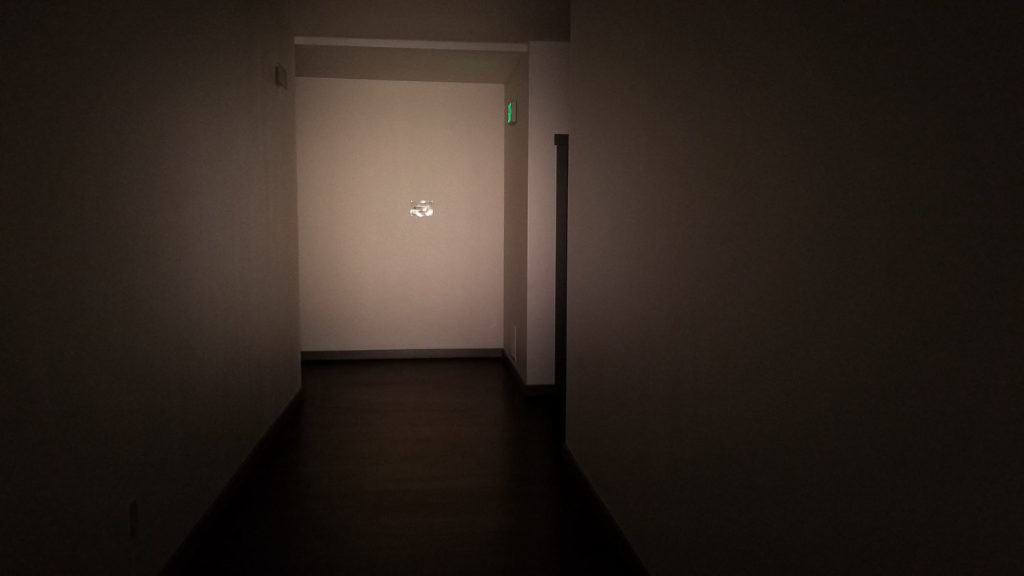
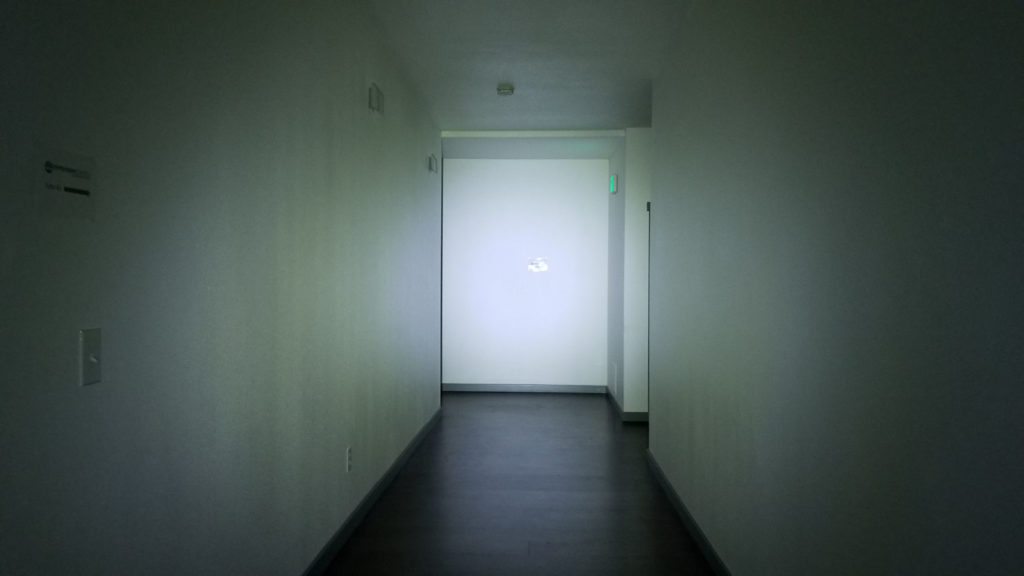
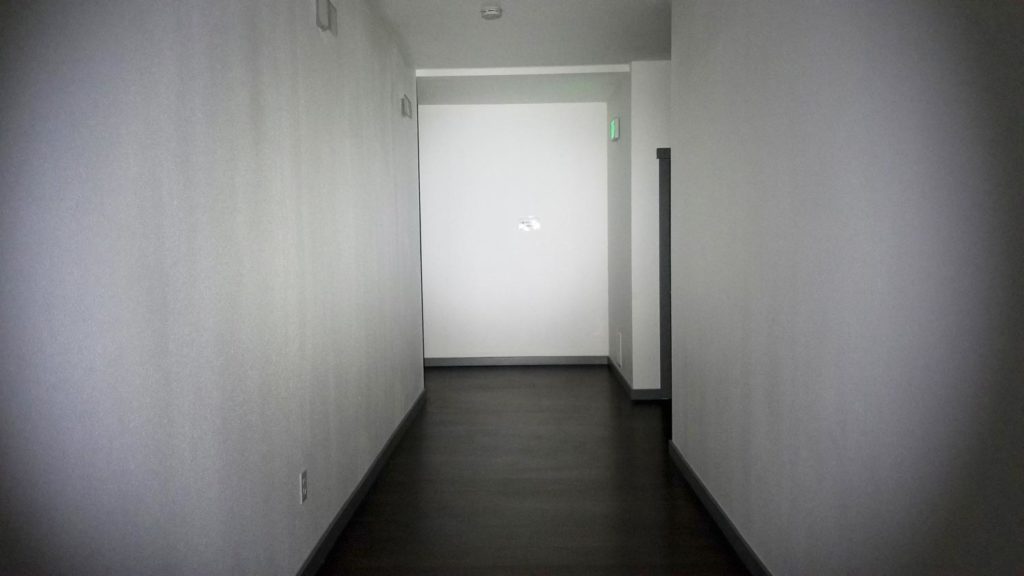
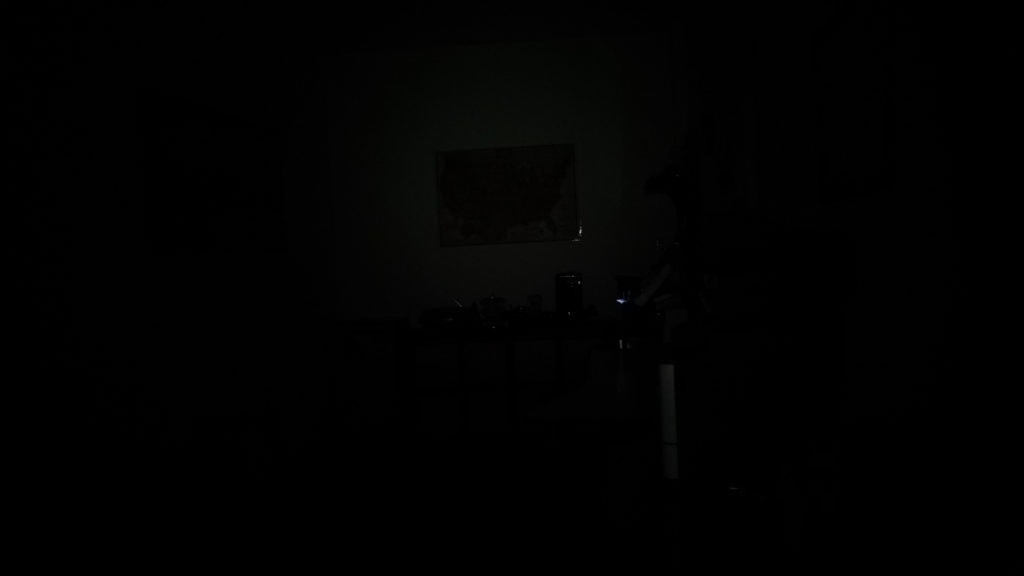
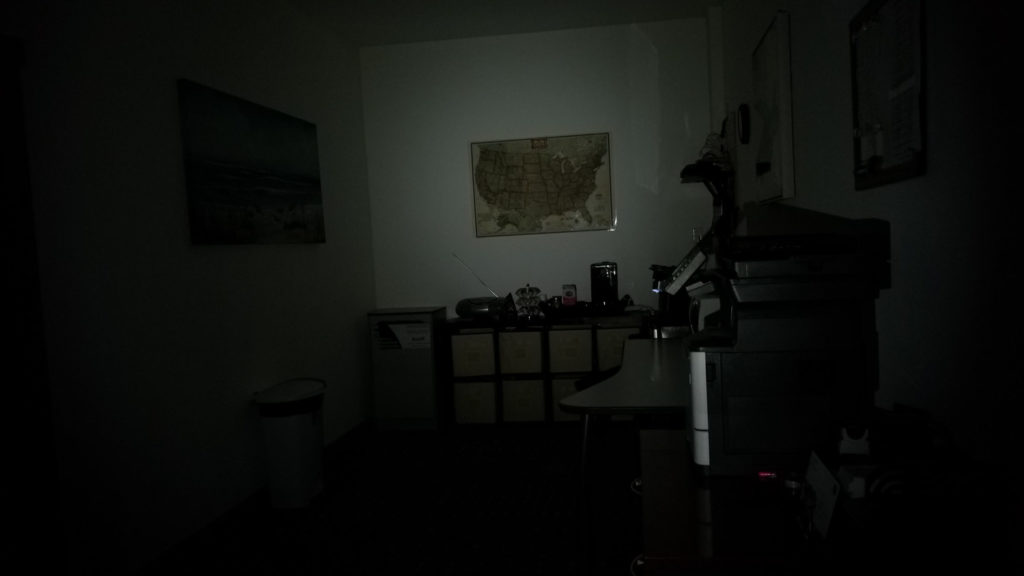
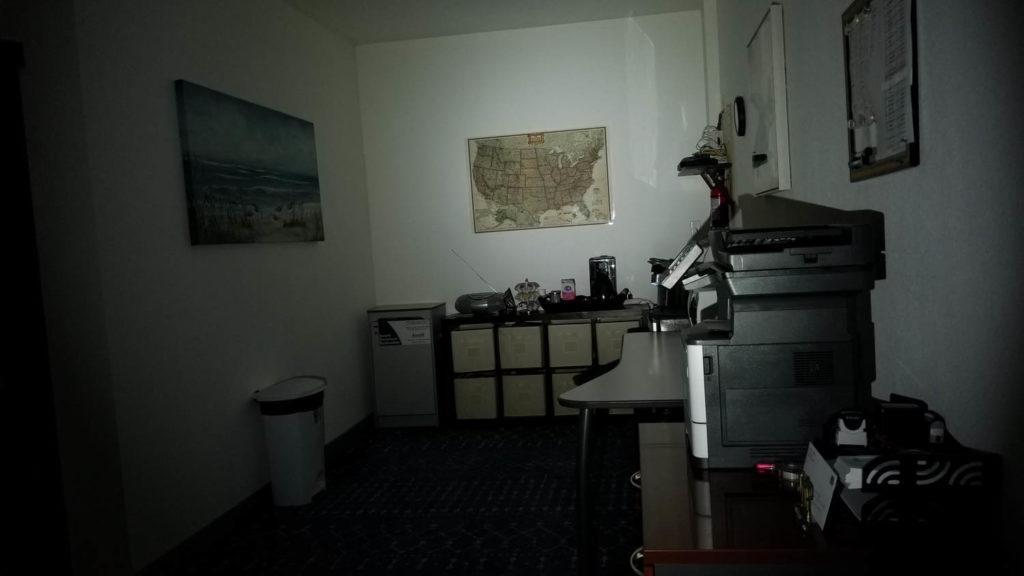
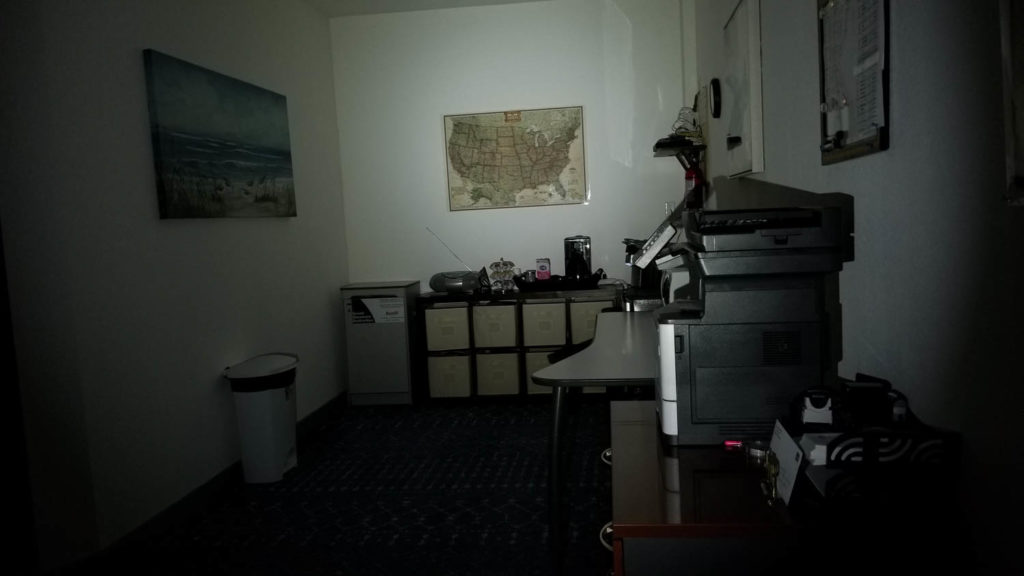
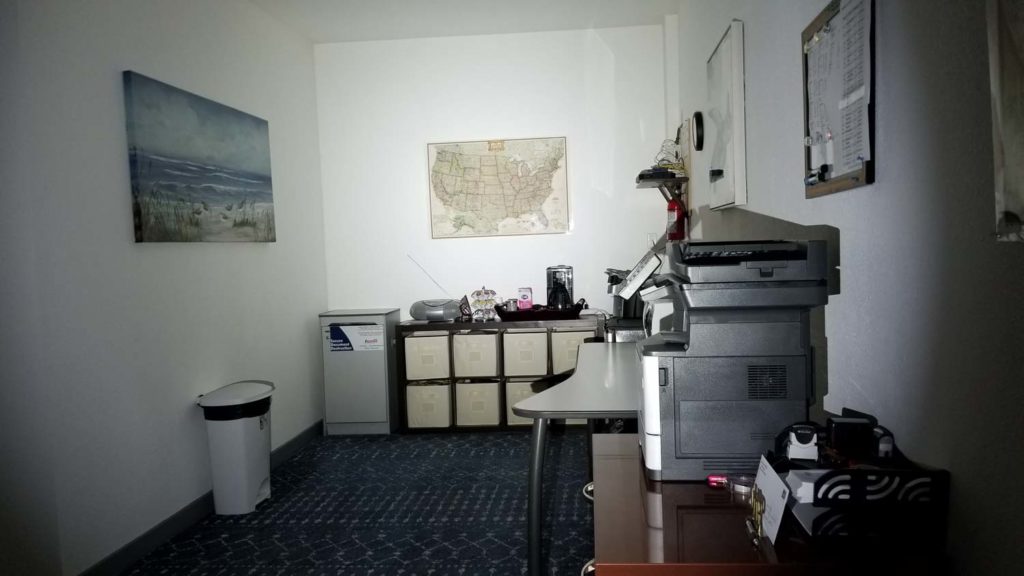
Disclaimer: This flashlight was sent to me for review at no cost by Sofirn. I have not been paid to review, nor have I been holding back on problems or defects.
Final Verdict
Pros
- Nice build quality
- Great output
- 1.5, 1.2, and 4.2 volt battery support
- Improved UI
- Great tint and beam quality with high CRI
- Very affordable
- Nice upgrade from the SP10S
Cons
- Included charger is cheap
- My flat top 14500s didn’t work
- Still comes on in my pocket
Explanation on star ratings:
1: Avoid: my phone flashlight would be a better choice – 2: Poor: significant defect or issues; almost unusable – 3: Average: some defects or issues; but still usable 4: Good: recommended (minor issues) – 5: Great: highly recommended

5 stars: ★★★★★
Sofirn has garnered an impressive following with flashlight enthusiasts for a few reasons: They make affordable, functional lights, and they listen to their customers, but more importantly, they’re active listeners.
When I reviewed the SP10S back in 2020, I was pretty impressed. I liked the high output Samsung emitter with great tint and high CRI, and the overall value was fantastic. I got mine on Amazon for about $20 after shipping, but you could get it directly from Sofirn for about $12. Amazing. It wasn’t perfect though, with the UI needing some tweaking and some fit and finish issues. However, I am happy to report that the new SP10 V3 has re-emerged with some nice improvements and tasteful upgrades. In addition, all the little nitpicky things I didn’t like about the S model have been addressed. The UI has been completely revamped, the tailcap has been redesigned, the switch gone through, and the output has been boosted quite a bit. The overall fit and finish are even improved upon. All good stuff and proof Sofirn listens.
The only leftovers I don’t care for is that flat top 14500’s don’t work and the included charger, while functional, seems a bit cheap, but hey, it’s practically free with the kit, so I can’t complain too much.
Overall, I’m impressed with the SP10V3, and it will probably supplant the Skilhunt E2A as my (second) go-to pocket light behind the FWAA. It’s still a solid little AA-size EDC light that would be equally happy in your pocket or floating around the flotsam and jetsam of your junk drawer or glovebox. Want to keep it as an emergency backup in long-term storage? Stick a lithium primary in there and it will be good for years of standby. Want 1000 Lumens? Pop in a 10 amp 14500. Nihm and even Alkaline cells work fine in the SP10V3. It’s very flexible, versatile, and I am (along with lots of others) eagerly awaiting the Anduril2 version of this light! Hey, maybe Sofirn will do a triple TIR? The FWAA needs some competition I think. 5 stars for the SP10V3.
Sofirn SP10 v3 for sale
1lumen selects and reviews products personally. We may earn affiliate commissions through our links, which help support our testing.